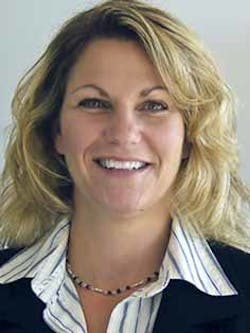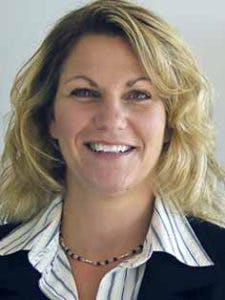A dialogue with Gestalt Diagnostics’ new COO & CSO, Lisa-Jean Clifford
COO & CSO, Gestalt Diagnostics.
Congratulations on your new position! What would you like MLO readers to know about Gestalt Diagnostics?
Thank you—I am very excited to have joined such an innovative company. Gestalt is focusing on bringing digital pathology to laboratories. Not just digital images, but really revolutionizing the entire workflow from accession through reporting. Gestalt’s underlying digital workflow engine was originally designed (by Gestalt employees) for radiology and is successfully processing over 15 million reads in radiology per year. We have taken that core technology and reworked it for the laboratory. Of course, we also provide all the standard items you would expect with a digital viewer—annotations, notations, measurements, pan and zoom, etc. We have several key benefits that we offer in digital pathology. A few of the more noteworthy are: the Pathologist Cockpit, which enables pathologists to sit on top of the LIS (or multiple LIS’s); a universal viewer which integrates with any scanner and any LIS (or multiple LIS’s); and the ability to have a workflow engine that automatically schedules and routes cases based on over 60 workflow rules which are configurable by the lab. Some of these rules include specialty, licensure, insurance and client requirements, or preferences, location, workload, etc.
Can you expand on Gestalt’s unique Pathologist Cockpit?
Our Pathologist Cockpit is our innovative approach at providing the pathologist a workflow and an area (cockpit) that is specific to their role. It sits on top of the laboratory information management system (LIS or LIMS) and IT infrastructure, providing the pathologist with all the patient information necessary to diagnosis, or consult on a case. They no longer need to be mired in the workflow of a LIS or bounce between multiple applications to access the information that is relevant. We provide them with the digital images, the relevant case information from the LIS, including available case histories and historical images associated with the case so they can see a time lapse of progression or evolution of disease in the patient. Direct access to integrated voice recognition and reporting templates and tools is also provided within the Cockpit. In addition, the workflow engine supports the use of traditional glass slides enabling facilities to support both digital and glass cases in a single workflow.
What is trending in the global digital pathology space?
Digital pathology is the direction healthcare is moving. The adoption has been wide-spread internationally and in the U.S. in academic and research facilities. More main stream adoption is just beginning and there have been recent studies on the ROI for going digital that have been published—fueling major investments in digital and interest in bringing digital into labs of all sizes. The ROI includes financial, efficiency, increased volumes, speed, satisfaction, perception, and most importantly, improved patient outcomes.
What abilities and personal qualities do you believe have contributed most to your success?
I would say there are several that are key: perseverance, assertiveness, a desire to continue to learn, grow, and to move technology and the company I am working for forward. The ability to read people and to truly listen is very important. I try to incorporate a great deal of integrity and ethics in everything I do professionally. I listen to what customers need—to what the market needs. I work with industry colleagues, including competitors, in an effort to position products and functionality combined with superior customer relations to produce what is always a win-win for healthcare. That is always my goal. To do the best job I possibly can for both my company and my customers.
What kind of recruitment tactics could be directed toward students to promote careers in the healthcare/medical lab/digital pathology space?
It is concerning to realize a shortage exists for new pathologists and the average age of current pathologists is 59. However, I do believe that with the way technology is currently moving in healthcare—we will have the ability to attract the younger generations. Technology in healthcare has never moved at such a rapid pace—with the introduction of digital, AI, big data, and other disruptors—we should be promoting healthcare (and pathology) as a ‘hotbed’ for more tech savvy generations.
What profession, other than your own, would you like to attempt?
Someday, I would like to transition my personal horse farm to a rescue for small animals, farm animals, and at-risk children. My goal would be to give children the opportunity to see the potential for a life they might not have had the opportunity to be exposed to—one where they can participate in the care and rehabilitation of animals, to work on growing and harvesting their own fruits, vegetables, and eggs—fostering a sense of worth and contribution, compassion and accomplishment. The animals would benefit from training, love and care. Hopefully the children would see the possibilities for a life that’s different than the one they might have envisioned.
Again, it’s the need to create a win-win, and hopefully make a meaningful difference.


